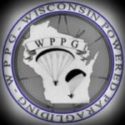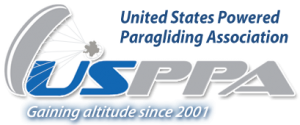Training Steps
Here is a list of some steps through training.
Wisconsin Powered Paraglider is a full time training facility to that uses the USPP training syllabus with added details and refinements catered towards each students needs.
Training schedule can be either come as you have time or at a straight 7 to 10 day course.
Its my belief that the very first step to take if your interested in Powered Paragliding is to meet with a instructor(take a introduction to PPG meeting).
Do not spend money beforehand. you can very easily buy useless, outdated, unreliable, and or gear that is not well suited for a particular person.
The purpose of a introduction is to get to know your instructor and know if they will take care of you in the way that you like or deserve.
You can ask all sorts of questions to get a idea if the sport is a good fit for your expectations.
You can see the different equipment and some of the principal ideas or each models characteristics.
You can better understand how the a instructor runs the training and works in general.
You can get a idea of the costs and what a instructor has to offer to save a student money and time.
Next is to start and take some lessons and see what the hard kitting work part is all about.
We start to kite newer glider to see the differences of newer design, characteristics and materials.
Throughout lessons the principals of the Paraglider and its components are covered. proper treatment, care and use are covered and rehearsed some times we use older gliders to get bad habits out and not to needlessly damage any new gliders.
As you grow and get the instructor gets to know you and your flying goals we can collaboratively decide what gear may be a good fit for each student and what brands or types of gear the student likes.
When a student is shown basic skills and shows they can responsibly be safe to kite on their own, a loaner glider can be checked out by the student to do home work and advance their skills slightly through kitting a bit on their own on a paraglider (old used/non flyable glider). Student practices about 5 times at different locations and days and better understands what was taught about weather and location selection.
Student then returns and we evaluate steps to take next towards advancing kiting skills. We say to be able to kite with less movement or straighter(less zig zags) across a field.
Steps towards kitting with a dummy throttle.
Work with USPPG syllabus to be sure students understanding airspace, flight principals, and proper procedures.
Static simulator work and motor running simulator work.
Motor basics, principals, and motor maintenance is covered.
Towing of a student without motor is a possible step to add skill of launch skills, flight path skills and landing technique. Tows are done without a motor at less than 50 feet.
Motor not running on the back kitting is added and skills are refined.
Motor running on the back while kitting.
Solo flight briefing and preparation to solo flight.
Solo flight while maintaining good radio contact.
Work at skills for launch and landing as well as work on in air skills and procedures to understand flight dynamics.
Post solo pilot tasks/skills : Take offs and landings, Low passes, Spot Landings, 360’s, Figure 8’s, S-turns, Cross country, Slow Flight, Power on landings, Go arounds.
Build flights, confidence and procedures to prepare for student to fly on their own with less and less interaction and guidance.

